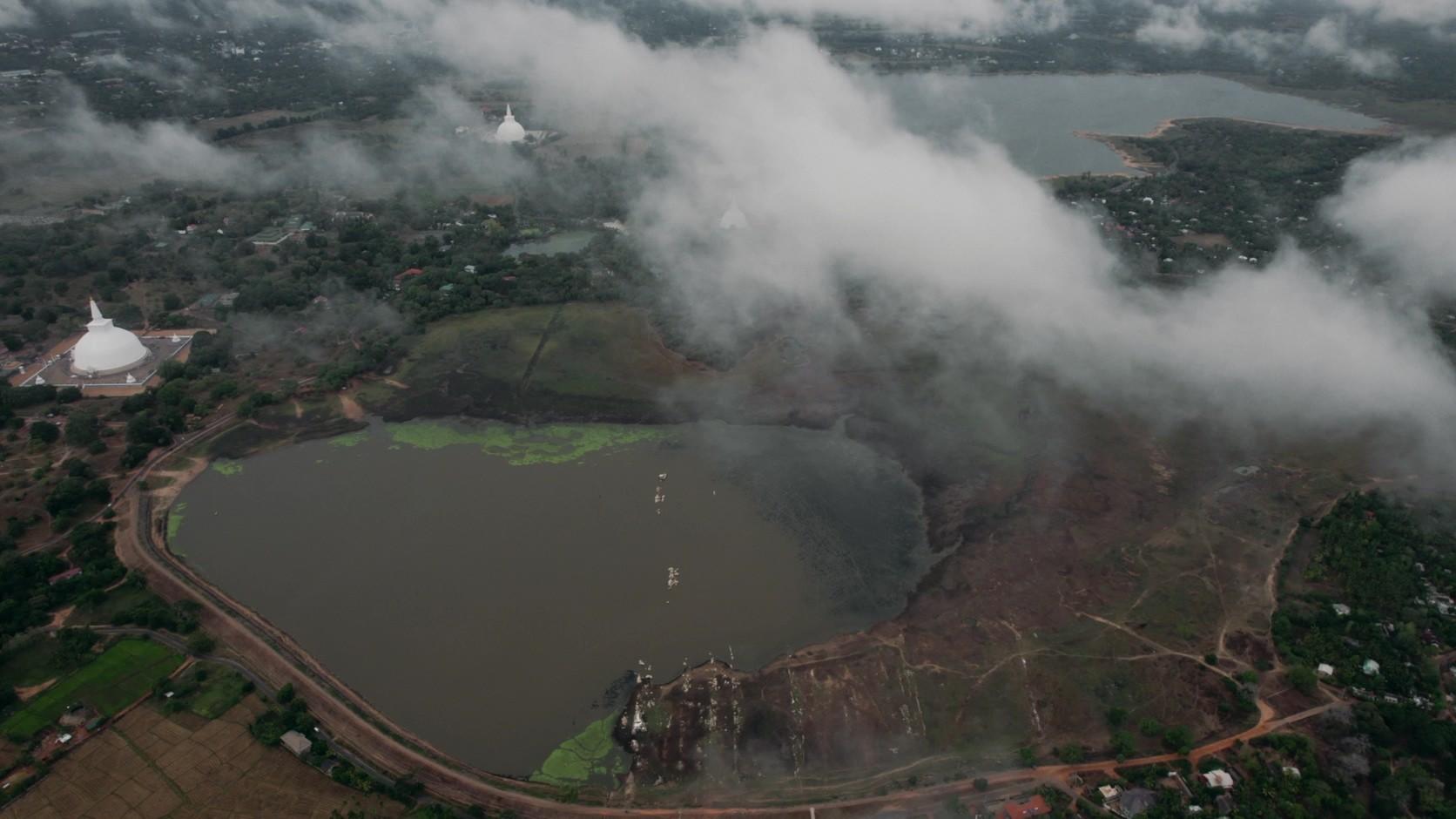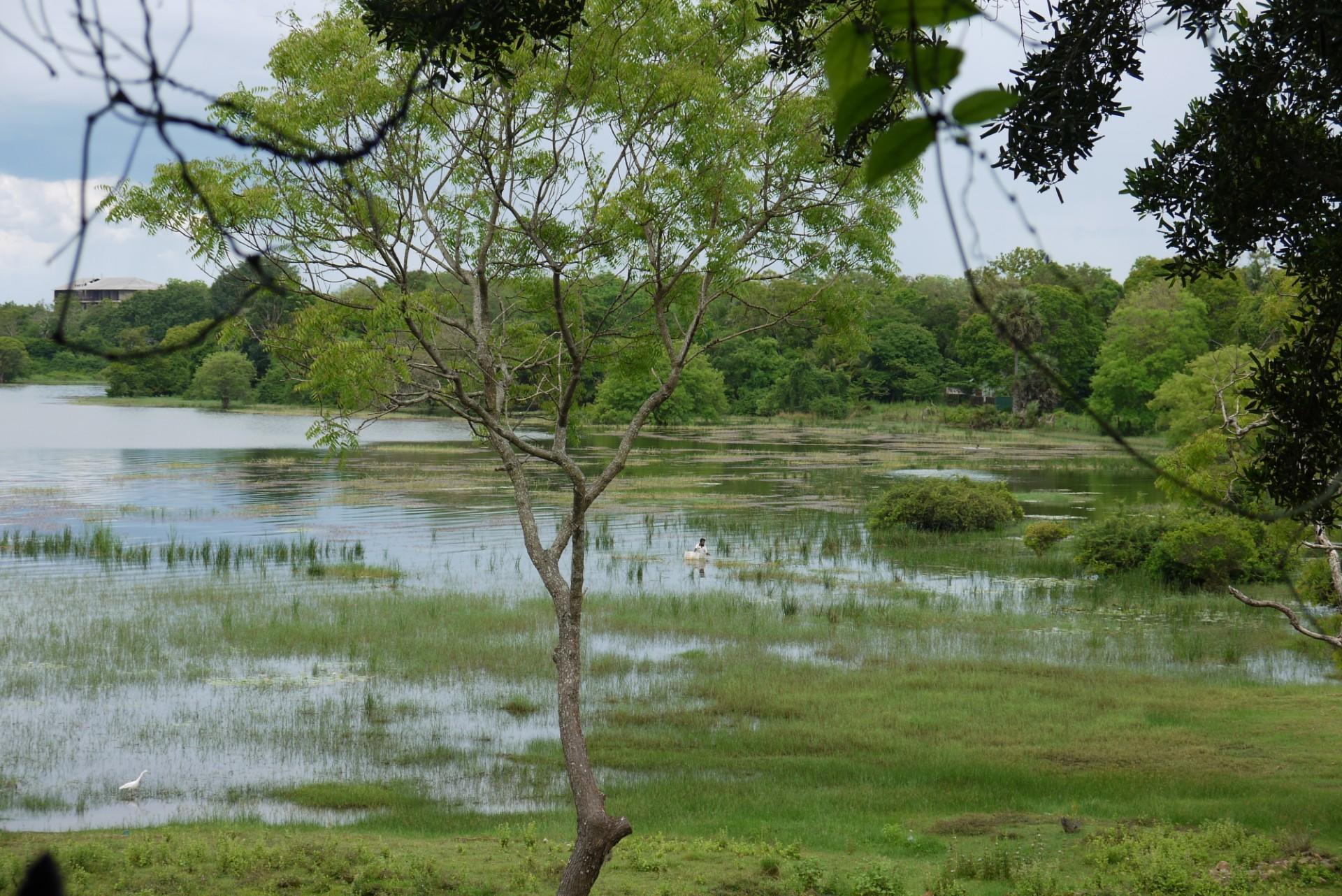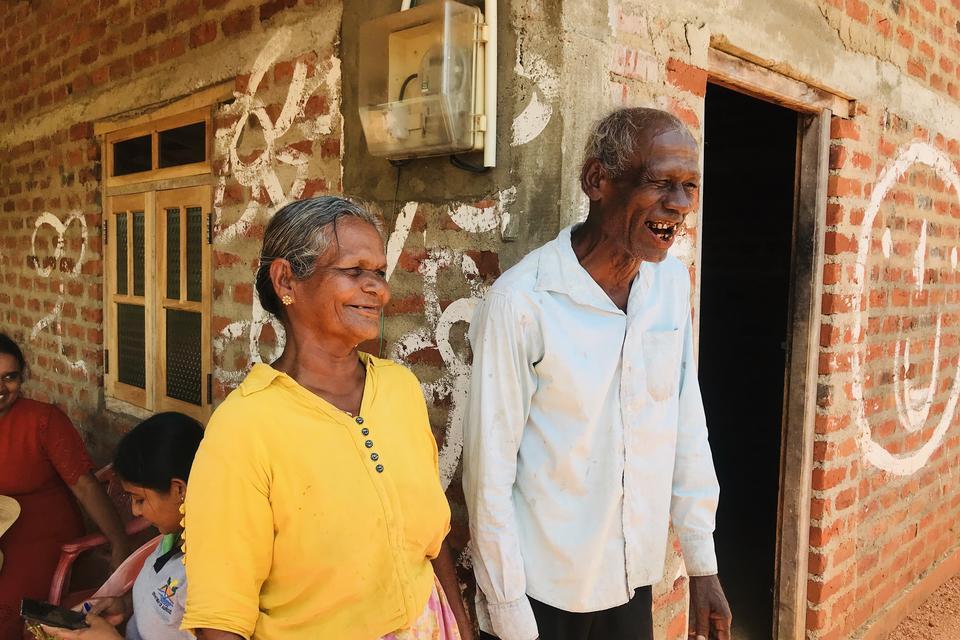Blog An Ancient Water Management System in Sri Lanka Comes Back to Life: Here's Why

The 'Tank Cascade Systems' are ancient infrastructure based on practices that have been passed down from generation to generation, sustaining the activities of local people and providing habitats for plants and animals. These systems that are essential to life in the dry region of Sri Lanka were recognized in 2017 as a Globally Important Agricultural Heritage System. These systems also exist in Latin America and the Caribbean with one in Brazil, one in Chile, two in Ecuador, two in Mexico and one in Peru. What can we learn from the Sri Lankan experience to design nature-based solutions to climate change?
By: Agnese Cutrin, Sharon Mendonce and Erika Eliana Mosquera Echeverry
The Tank Cascade Systems (TCS) is an ancient irrigation system designed to collect, store and distribute rainwater in the dry region of Sri Lanka. Consisting of a series of interconnected reservoirs, they were built over 2,000 years ago (1) to prevent water shortages in the part of the country that historically has received and continues to receive less rainfall (less than approximately 1,750 mm per year) and whose annual evaporation - between 1,700 and 1,900 mm - causes a humidity deficit in the soil during periods of drought (2).

Many different trees grow in the ecosystem around the TCS, such as the Mee (Madhuca longifolia), the Beli (Aegle marmelos) and the Divul (Feronia limonia). These trees are considered genetic resources of global importance. (Photo credit: T. Borelli)
.
This water management system, called 'ellangawa' in Sinhala (the official language of Sri Lanka), has been an important strategy for the local population to ensure a constant supply of water throughout the year. TCSs were especially necessary for agriculture - particularly rice cultivation, which is the local staple food and main source of nutrition. However, local communities were also able to cultivate different types of crops and thus ensure both a regular food supply and a stable source of income. Given the importance of these systems for both past and present agricultural practices, in 2017 the TCSs were recognized as part of GIAHS (Globally Important Agricultural Heritage System) (3).
TCS don't only benefit the local inhabitants, but also their surrounding environment: they create habitats for various plant and animal species, such as Asian elephants (Elephas maximus L.) (2) and numerous birds (4) such as the Indian lapwing (Vanellus indicus) and the crowned hornbill (Anthracoceros coronatus). In addition to being a habitat for different species, the TCSs host a variety of plants, which, by growing around the tanks, act as water purifiers and soil protectors (2), thus creating an interconnected and fertile environment.
As the TCSs are made up of a series of reservoirs, each 'tank' has a specific function: for example, there are reservoirs that store water for animal husbandry, others for irrigation, and others for household needs. Thus, each function of the TCSs is vital both for local communities and nature.

A man fishing in a tank, where there are several edible fish, such as Hunga (Heteropneustes fossilis) which is typical in the local cuisine. (Photo credit: S.Landersz)
The TCSs also favor and solidify cultural identy, thanks to the traditional knowledge about their use that has been passed down through several generations in the communities.
For example, the Ayurvedic system - the use of specific medicinal plants such as Gotu Kola (Centella Asiatica) for well-being - uses indigenous aquatic plants that grows right on the surface of the TCS reservoirs and are used to relieve anxiety, heal wounds and cure other skin conditions (5). Another traditional strategic method transmitted is the biological control of insect pests called Kem (6), which consists of various natural methods, such as scattering wood ash in the rice fields when there is still dew, to repel these pests. Also interesting is the ritual of Pal Kavi (7), which consists of reciting poems and songs at night to protect cultivated fields from wild animals.

The reservoirs are used by the inhabitants for countless activities, which create harmony and solidarity among the community.(Photo credit: S.Landersz)
However, Tank Cascade Systems have been neglected in recent years, and in some places, they were even abandoned due to the lack of adequate management, difficulties in agricultural productivity, or the weakening of the soil due to the excessive use of chemical fertilizers and pesticides, and the increase of invasive aquatic plants (8) that spread over the surface of the reservoirs. Also, increasingly unstable weather phenomena, such as rising temperatures and subsequent drought have had a negative influence, reducing the availability of water from the tanks and thus causing problems for local people and farming systems.
For this reason, the Global Environment Facility (GEF), the Sri Lankan Ministry of Environment, the United Nations Environment Programme (UNEP) and the Alliance of Bioversity International and CIAT established a collaboration to renovate the remaining tank cascade systems. This project, called Healthy Landscapes, also promotes sustainable management of the TCS to support biodiversity and ensure their use for future generations. Healthy Landscapes also aims to build networks that strengthen the knowledge of local communities, re-establishing a relationship between local inhabitants and these important systems.
References
Meet Sharon

Sharon Mendonce
Research FellowThe Global Environment Facility (GEF), the world's largest public funder of international environmental projects, is supporting the Healthy Landscapes project, led by Sri Lanka through the Ministry of Environment as the lead national agency. The Alliance of Bioversity International and CIAT coordinates the project with support from the United Nations Environment Programme (UNEP).
Header photo credit: BBC Storyworks



